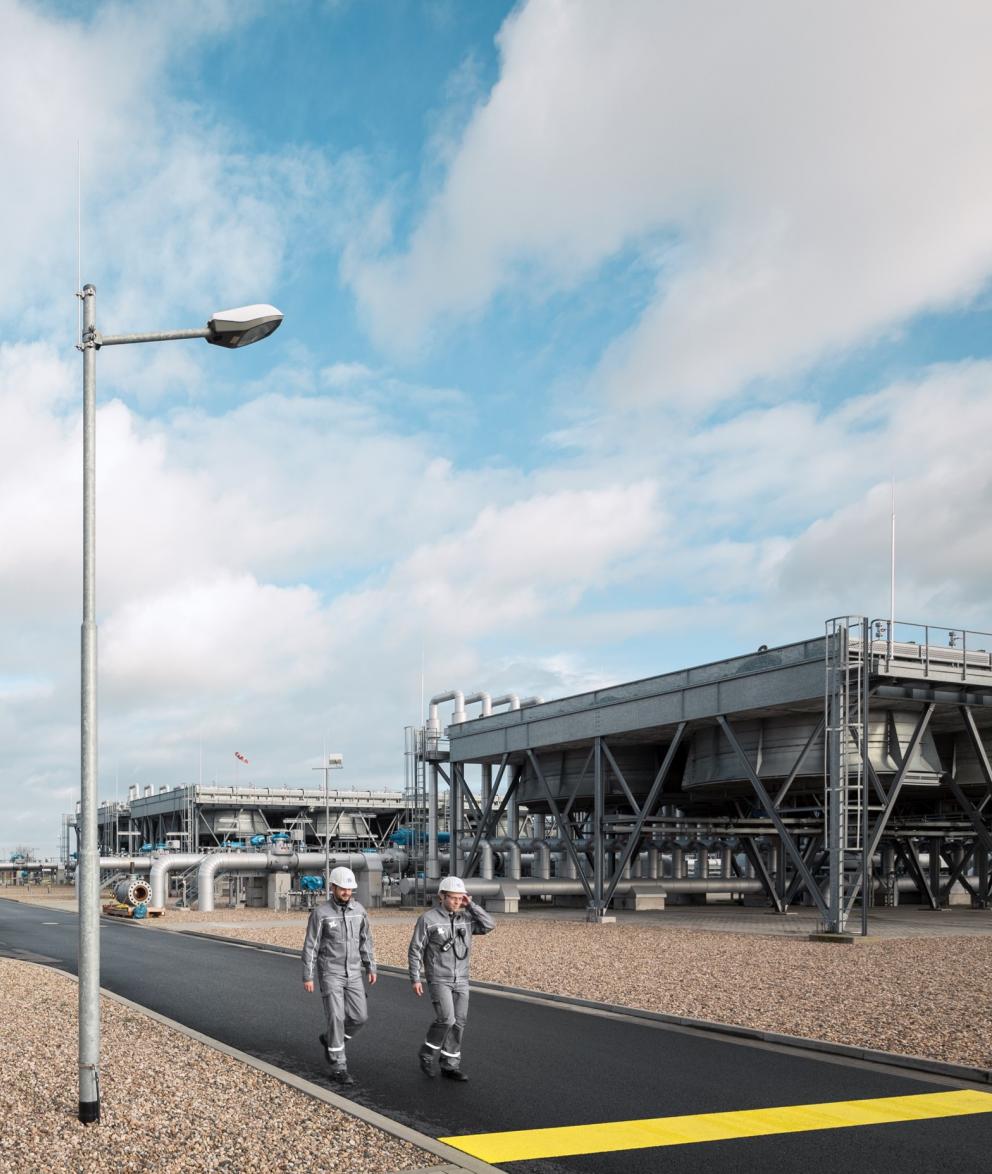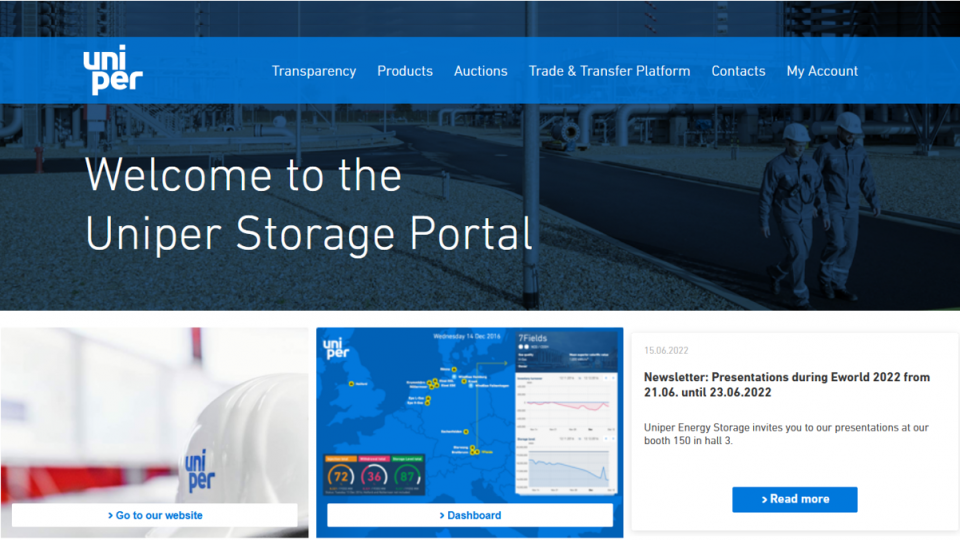Gas Storage Technology
Why do we store gas underground?
Today, gas consumption is subject to large seasonal fluctuations between summer and winter as well as short-term changes in demand when gas is traded. By storing gas on a large scale in our underground gas storage facilities, we balance these out. The gas storage facilities also play an important role in maintaining stability in the gas networks in order to be able to compensate for consumption peaks in winter safely at short notice.
In the decarbonised energy supply of the future with a large share of renewable energies, additional fluctuations will occur if, for example, the sun and wind are not available. That's why it will be even more important in the future to be able to react flexibly to increasing fluctuations in demand, for instance by storing green hydrogen in salt caverns.
Compared to storage options on the surface, underground gas storage facilities can store much larger quantities of gas. We distinguish between two types of underground natural gas storage facilities: porous rock storage facilities are natural reservoirs in porous rock in which the natural gas can be stored in very large quantities, similar to a stable sponge. Cavern storage facilities are artificially created cavities in underground salt domes that have a high injection and withdrawal capacity. These caverns can reach heights of several hundred meters. Some are more than twice as high as the Eiffel Tower.
How does underground gas storage work?
The gas is transported to the storage facility via long-distance pipelines. In the course of injection, the gas is often filtered at the station entrance and then the flowrate and composition are measured. The compressor units then compress the gas, which is cooled and - depending on the storage location - fed into a cavern or porous rock storage facility.
During withdrawal, free liquids and solids are separated from the gas. The gas is then preheated to prevent the formation of gas hydrates during the subsequent pressure reduction to close to gas transmission pipeline pressure. Once the gas pressure has been reduced, it is dried to below the contractual limits using a gas dehydration unit. The flowrate and quality of the gas are then measured again before it is fed into the gas transmission pipeline.
The interactive graphic describes the individual surface and underground components of the storage facility in detail.
-
1 Gas transmission systemThe transmission system transports the gas to be stored from the production reservoirs or import terminals, sometimes over several thousand kilometers, to the storage facility.
-
2 FiltersThe inlet filter, also known as a separator, removes residues such as dust and particles from the gas that it has picked up on its way to the storage facility.
-
3 Metering stationThis unit measures the quantity and calorific value of the gas.
-
4 Compressor stationThe gas arrives at the storage facility with the pressure of the transmission system. In order to be able to inject as much gas as possible and withdraw it at the highest possible rates, the pressure of the gas is increased with the help of a mechanical compressor when it is injected into the underground storage facility.
-
5 CoolerDue to its physical properties, the gas heats up during compression. To prevent damage to the downstream process components, the temperature is reduced again by the coolers after compression.
-
6 WellheadThe wellhead is the interface between the surface and underground installations. It controls the flow of gas to and from the well. It serves as the central safety barrier.
-
7 WellThe well connects the surface installations to the cavern or the corresponding porous rock layer where the gas is stored. Its lining with pipes and cement also provides the barrier to prevent gas from flowing into the intermediate.
-
8 Salt formationTo create caverns, a sufficiently thick layer of salt is required in the underground.
-
9 CavernsCaverns are artificially created cavities in the salt rock that have been formed by solution mining (dissolving the rock salt with fresh water).
-
10 Cavern wallThe walls of the caverns are impermeable to gas due to the high density and natural physical properties of the salt.
-
11 Gas-tight caprockThis rock layer is impermeable to gas due to its natural physical properties and thus ensures that the gas is unable to leave the storage layers upwards.
-
12 Gas-bearing sectionStorage layers contain interconnected pores (= small, natural cavities in the rock) that allow the inflow and outflow of gases and liquids and so enable storage.
-
13 Water-bearing sectionThis rock layer naturally carries reservoir water, which safely retains the gas in the reservoirs downwards.
-
14 Control roomThe technical processes of the storage facility are controlled by the operating staff in the control room.
-
15 Preheating systemDue to its physical characteristics, the gas must first be heated up so that the storage pressure can be reduced to the transmission system pressure.
-
16 Pressure reduction systemThe pressure of the gas is reduced to match the level of the transmission system.
-
17 Dehydration unitThe gas is treated in order to maintain the required quality for the transmission system. In particular, the moisture that it has absorbed during storage is removed.
Injection and Withdrawal
This video explains the injection and withdrawal process at our natural gas storage facility ESE in Etzel. Gas is transported to the storage facility over several thousand kilometers via pipelines. On this route, contamination can occur due to residues from the long-distance pipeline. The separator is the first step and frees the gas from undesirable accompanying substances. The measuring system as the second step determines not only the quantity of the gas but also its calorific value. The pressure of the gas in the storage facility is significantly higher than in the pipeline network in order to be able to store a large quantity of gas in a space-saving manner. In order to increase the pressure of the gas, compressors are used, which are the heart of the system.
By compressing the gas, the gas heats up to temperatures beyond 100°C, depending on the pressure ratio. Downstream gas coolers are used to cool the gas back to a temperature of approx. 30-40°C before it is injected. In this state, the gas can be fed to the cavern and stored. Once demand increases, the gas is withdrawn from storage and returned to the transmission network. While the gas was stored underground, it absorbed moisture, among other things. The water separator removes the free water as well as solids from the gas. To do this, the gas in the water separator is set in rotation, causing liquids and solids to be thrown against the container wall and then discharged. In the next step, the gas is heated by the preheater to compensate for the cooling of the gas when the pressure is reduced. The heat for this is generated in the boiler house. Then the pressure of the gas is reduced to capillary level. The glycol drying unit treats the gas in accordance with the specified requirements so that it can be returned to the pipeline network after the flow and quality measurements have been taken.
Storage types
Cavern storage
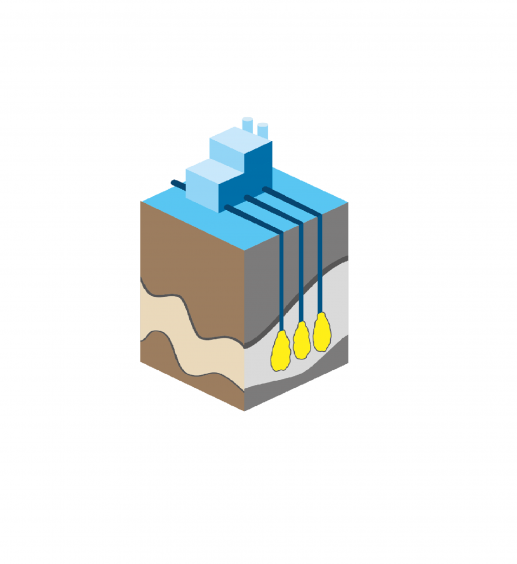
Caverns are large, natural or artificial underground cavities created by the excavation of rock salt or by mining. The artificially created caverns in rock salt are of particular importance for underground gas storage. The petrophysical properties of salt guarantee natural impermeability, so that additional sealing is not necessary. The prerequisite for the construction of caverns for underground gas storage is large, underground salt formations. This is particularly the case with the salt domes in northern and central Germany. To build a cavern, rock salt is drilled, then the salt domes are flushed with fresh water, creating cavities in which the natural gas can be safely stored.
Cavern storage can be used to compensate for both seasonal and short-term fluctuations in demand, as it can be filled and emptied more quickly than porous rock storage facilities.
Porous rock storage
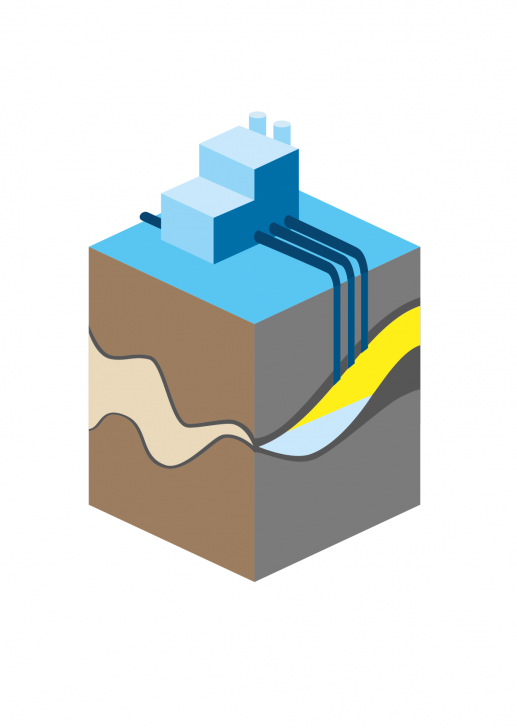
Porous rock storage facilities are underground gas storage facilities in former natural gas or oil deposits and in aquifer structures. A prerequisite for the storage of gas in porous rock storage facilities is the presence of porous or fissured storage rock in which - usually microscopic - cavities the gas can be stored.
To ensure that the gas is stored safely and permanently, a pore storage facility requires an overlying, gas-tight rock layer as a storage cover. In our storage facilities, the storage rock consists of sandstone and the storage cover consists of dense clay layers many meters thick. The gas is injected and withdrawn via deep boreholes. In addition, all wells are equipped with independently closing underground safety valves.
Porous rock storage facilities are mainly used for seasonal base load coverage, as they usually have a large storage volume, but the gas has to be injected and withdrawn more slowly due to the naturally given flow conditions in the storage rock.

Cushion gas and working gas
The total amount of gas contained in storage can be divided into working gas and cushion gas. The gas itself is the same, the difference is the function.
The working gas - the actual purpose of a gas storage facility - is the volume of gas that can be stored and withdrawn. This portion of the gas is therefore the usable gas volume that can be marketed.
The cushion gas provides the necessary pressure to allow the working gas to be withdrawn from the storage at high rates even at low storage levels. In addition, maintaining a minimum pressure is necessary to ensure long-term integrity in cavern storage facilities. In aquifer-influenced pore storage facilities, the cushion gas prevents excessive water intrusion into the pore space used for gas storage. The cushion gas limit is a lower limit for the withdrawal process of a gas storage facility, which is determined by official requirements or geological/technical conditions.
Technical storage curves
The technical storage curves show the injection and withdrawal rate of the storage facility depending on the fill level.
The available system capacity is significantly influenced by the pressure and temperature of the stored gas. However, these are not constant, but change depending on the fill level and the storage operation mode.
The system unit operation with the lowest capability at an assumed storage level and certain pressure and temperature conditions determines the available storage capacity. The course of the technical storage curve is influenced - depending on pressure and temperature - by the different components of the storage, such as separators, compressors and the well.
Another factor influencing storage capacity is the pressure of the gas transmission system from which gas is either injected or withdrawn.
Hydrogen as a future option
We are equipping our storage facilities for a carbon-neutral future. The underground storage of natural gas has been tried and tested for decades. We assume that natural gas will remain with us for a long time as a bridge to a completely decarbonised energy world in the future. At the same time, we are already preparing our storage facilities for the energy sources of the future. Hydrogen is seen as the key to the energy transition and has the advantage that, like natural gas, it can be stored underground. Large-scale underground hydrogen storage is essential for the European hydrogen market and will help improve its economic viability. We have suitable storage facilities for the hydrogen market and have already started to test their feasibility. A clear regulatory environment is now needed to enable the conversion and development of new underground hydrogen storage facilities.
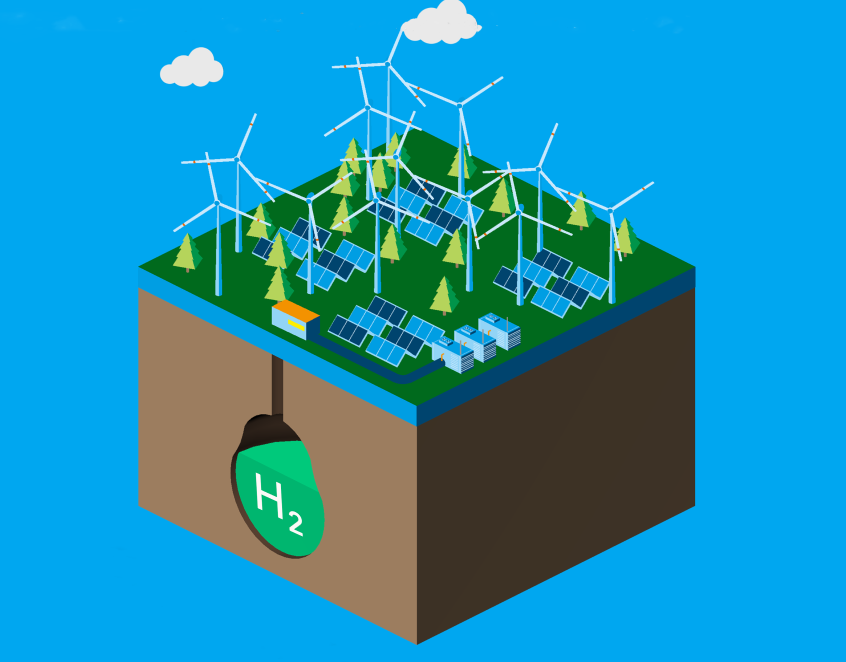
Process safety
Uniper plays a leading role in promoting Health, Safety, Security, Environment & Sustainability (HSSE-S) best-practice strategies wherever we operate. We firmly believe that this benefits society, our employees and their families. As part of OGMP 2.0, for example, we have also voluntarily committed ourselves to continuously and transparently report our methane emissions according to defined standards and furthermore reduce them. We want to protect people and the environment from harm, minimise risks, increase safety, and thus ensure that everyone at Uniper feels safe in their jobs and returns home safely at the end of each day. This is our top priority. Our commitment to health and safety naturally includes business partners, neighbours and visitors.
Monitoring from a distance
As a special feature in the operational management of our storage facilities, we use network control technology primarily for remote monitoring, and in some cases also for control. This process control technology includes the measurement, control and regulation technology for the operation of our storage facilities and provides the operating personnel, known to us as dispatchers, with the necessary data to make targeted decisions and facilitate routine work. The storage facilities are monitored remotely in our dispatching center, which is manned 24/7. This involves reacting to malfunction situations and controlling injection and withdrawal processes. For this purpose, process information such as accounting values, measured values and messages are transmitted to our dispatching control center, where they are processed and displayed in a user-friendly manner. From there, control and actuation commands are sent to the process in the opposite direction. General operation of the storage is of course still possible at the storage facility as well. This type of monitoring and control of gas storage processes brings many advantages and great flexibility.
